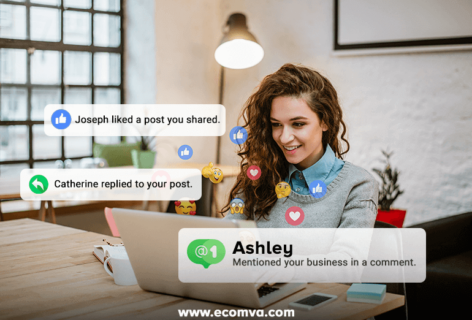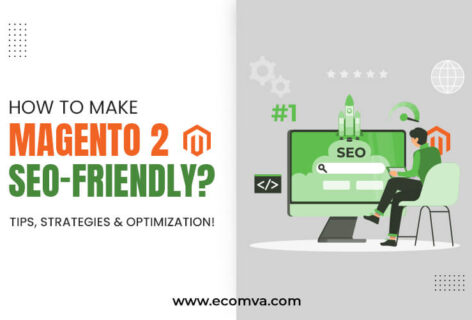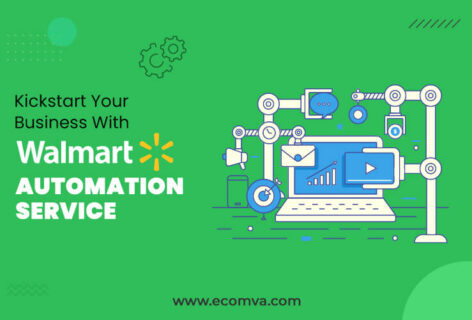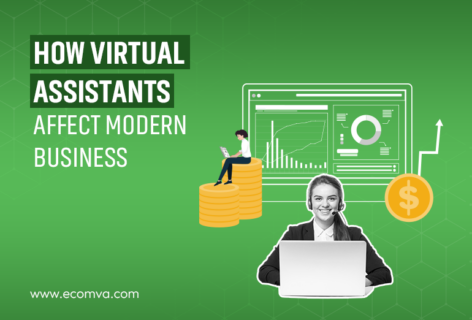Best Ecommerce SEO Services for Mobile-First Growth in 2025
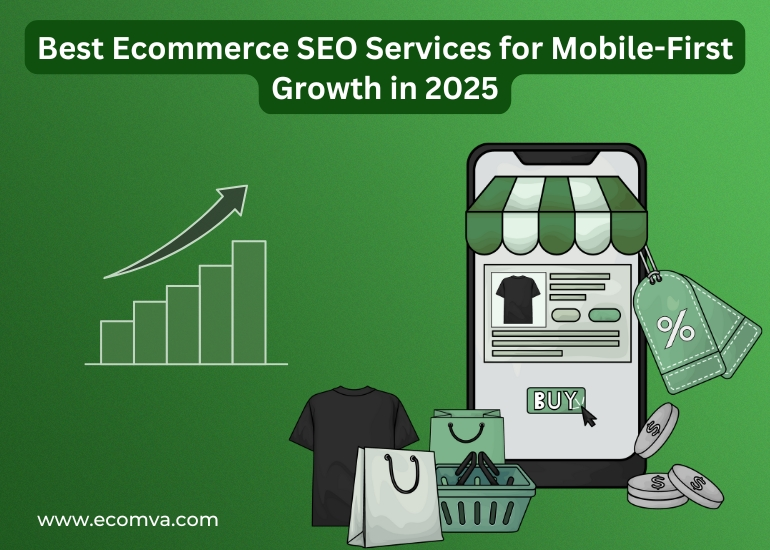
Search engines have become central to how people discover and shop for products online. When someone needs something, they often start with a search — and for ecommerce businesses, appearing in those results directly affects how much traffic, interest, and revenue they can generate.
To earn that visibility, ecommerce websites need a solid foundation. That includes making the right choices around content, structure, and site performance. Each part plays a role in how search engines assess and rank your store. A clear strategy, strong technical setup, and a good understanding of how today’s shoppers behave, especially on mobile, are all important to get results.
This is where the best ecommerce SEO services make a real difference. They guide businesses toward the areas that matter most: mobile-first design and first-party personalization. They’re essential parts of how SEO works in ecommerce today, and they help websites earn trust, keep users engaged, and grow consistently through search.
Why Mobile-First Matters More Than Ever for Ecommerce SEO
Google officially made mobile-first indexing the default for all new websites. That means Google’s crawlers look at the mobile version of your ecommerce site first — not the desktop version. If your mobile website is slow, hard to use, or missing important content, your rankings can suffer.
And users notice too. More than 60% of ecommerce traffic now comes from mobile devices. If your site doesn’t load fast or look clean on mobile, they’ll leave.
Let’s break down what makes a site qualify as one of the mobile-friendly ecommerce websites:
| Mobile-Ready Element | Why It Matters |
|---|---|
| Responsive design | Ensures content fits all screen sizes |
| Fast page speed | Improves UX and reduces bounce rate |
| Tap-friendly buttons | Helps users navigate with their fingers |
| Legible text and spacing | Prevents zooming and frustration |
| Minimal popups and blockers | Avoids penalties and bad mobile experience |
Getting these elements right is part of technical SEO for ecommerce. It’s not just about fixing code. It’s about making your site usable on the devices your customers actually use.
How First-Party Data Shapes Personalized Ecommerce Experiences
As third-party cookies become less reliable, brands are now relying on first-party data — the information collected directly from users on your site. This includes product views, email sign-ups, order history, and more.
This type of data powers personalized ecommerce marketing. When users visit your store, they expect to see relevant recommendations, promotions based on their past behavior, and reminders of what they browsed earlier.
That’s not just good marketing — it’s good SEO. When users find what they want quickly, they stay longer, bounce less, and engage more. Search engines notice these signals.
According to McKinsey & Company, companies that get personalization right can generate 40% more revenue from those activities than competitors.
The best ecommerce SEO optimization strategies today involve aligning your content, product discovery, and even meta descriptions with the user’s previous intent. That means using first-party data to guide your SEO efforts.
In short:
- First-party data helps you create intent-matching content
- Personalised experiences improve engagement metrics
- Better engagement supports stronger rankings
What the Best Ecommerce SEO Services Actually Do
It’s easy to assume SEO means writing a few blog posts and fixing broken links. But effective ecommerce SEO goes deeper than that, especially for online stores with hundreds of SKUs.
Here’s what the best ecommerce SEO services actually focus on:
Core Tasks in Ecommerce SEO
- Site Architecture: Creating clear category hierarchies, URL structure, and internal linking patterns
- Page Speed Optimization: Reducing load time across mobile and desktop
- Schema Markup: Adding product, review, and breadcrumb schema for rich results
- Category & Product Page Optimization: Writing original, keyword-targeted descriptions
- Image Optimization: Naming, compressing, and tagging images correctly
- Keyword Mapping: Matching the right keywords with the right pages
- Crawl Management: Managing robots.txt, canonical tags, and crawl budgets
All these fall under technical SEO for ecommerce and are critical for scaling SEO across large ecommerce websites.
Execution Support
This is where virtual assistants make a real difference. Services like EcomVA have SEO-trained virtual assistants who handle everything from keyword research to image alt-text, metadata, and URL audits. They go beyond admin-level work and take on tasks that require accuracy and SEO understanding.
If you need help with product uploads, writing meta descriptions, or fixing internal links across hundreds of pages, a virtual dropshipping assistant with SEO experience can take care of that, giving you more time to focus on the bigger picture.
The best ecommerce SEO services handle more than strategy. They take care of the actual implementation too, using trained virtual assistants who know how to work across different ecommerce platforms.
Mobile-First + First-Party Personalization: Why This Combo Improves SEO Performance
When mobile optimization and personalization work together, ecommerce performance rises.
Here’s how it plays out:
- A user lands on a fast, mobile-optimized page.
- Their browsing behavior is tracked using first-party data.
- Next visit, they’re shown relevant products based on their interests.
- They stay longer, view more pages, and are more likely to buy.
- Search engines see this positive engagement and push the page higher in rankings.
This is why modern ecommerce SEO optimization focuses heavily on both user experience (on mobile) and user data (for personalization). It’s not either-or. You need both working in sync.
According to a study by Think with Google, 53% of mobile users leave a website page that takes longer than 3 seconds to load.
That stat alone shows why mobile-friendly ecommerce websites matter so much, not just for users, but for SEO performance too.
If your ecommerce platform fails on mobile or serves irrelevant content, it’s missing two of the strongest SEO signals in 2025.
Looking Ahead!
SEO for ecommerce has moved past old-school keyword stuffing. Today, it’s about understanding how people shop, what devices they use, and how to give them the right content at the right time. That’s why the focus has shifted to mobile-first experiences and first-party personalization; they reflect how real users behave online.
If you’re serious about growing your store, working with the best ecommerce SEO services is a smart move. They’ll help you create faster, cleaner, and more user-aligned websites that search engines actually want to rank.
Want hands-on help with execution? Services like EcomVA provide trained virtual SEO assistants who can take care of the tasks that make all the difference, from product page SEO to mobile optimization and data-driven content work.
The rules have changed. SEO now starts with mobile and thrives with personalization. And the best ecommerce SEO services are already working this way.
FAQs
1. What’s the difference between ecommerce SEO and regular SEO?
Ecommerce SEO is built around products, categories, and how people shop online. The best ecommerce SEO services know that getting a product page to rank is a different job compared to ranking a blog or a service page. It’s more about structure, speed, and product intent.
2. How often should I update my ecommerce SEO strategy?
If you’re changing prices, adding products, or running new promotions, your SEO should keep up with that. It’s a good idea to go over your ecommerce SEO optimization setup every few months. Some changes need quick updates, others can be part of a scheduled audit.
3. Should I use the same keywords for product and category pages?
Not really. Product pages usually work better with specific search terms — the ones people use when they’re close to buying. Category pages, on the other hand, suit broader terms. That’s something the best ecommerce SEO services usually plan out from the start.
4. How does ecommerce SEO impact paid ads?
When your site loads fast, looks clean on mobile, and has well-structured content, your ads perform better too. These things are part of technical SEO for ecommerce, and they help lower your ad costs and boost your Quality Score in Google Ads.
5. Do image alt tags make a difference in SEO for ecommerce?
Yes, they do. Adding clear, useful alt text to product images helps search engines understand what’s on the page. Sites that focus on being mobile-friendly ecommerce websites also tend to pay attention to image SEO — it’s all connected.
6. Is blog content still worth doing on an ecommerce site?
It is. Blog posts aren’t just for sharing ideas — they help you get found on search engines too. They also support your personalized ecommerce marketing efforts by bringing in people earlier in their buying journey.
7. How do I know if my ecommerce SEO is actually working?
You’ll want to look at traffic, sales, and rankings over time. Tools like GA4 or Search Console can help with that. A lot of the best ecommerce SEO services also include reporting, so you can see what’s changing and where things are improving.
8. What are some common mistakes in ecommerce SEO?
Repeating the same product descriptions across pages is a big one. So is forgetting to set up proper redirects or skipping over structured data. Even something as basic as a slow mobile site can hurt rankings. These are all parts of technical SEO for ecommerce that often get overlooked.

